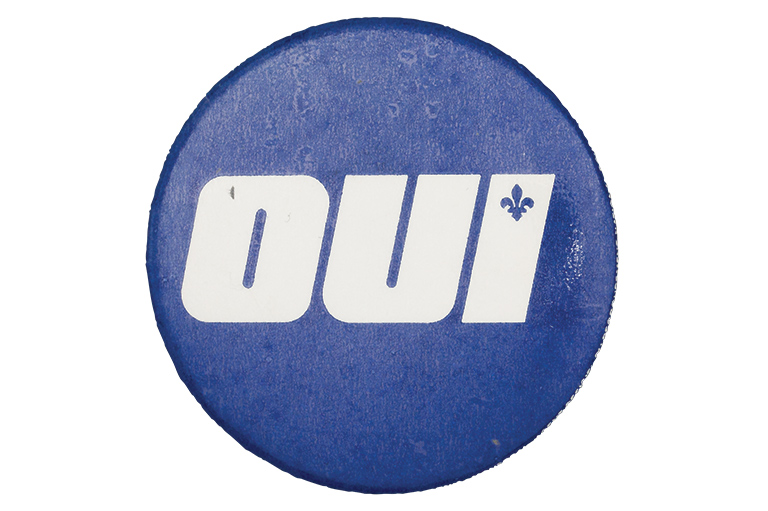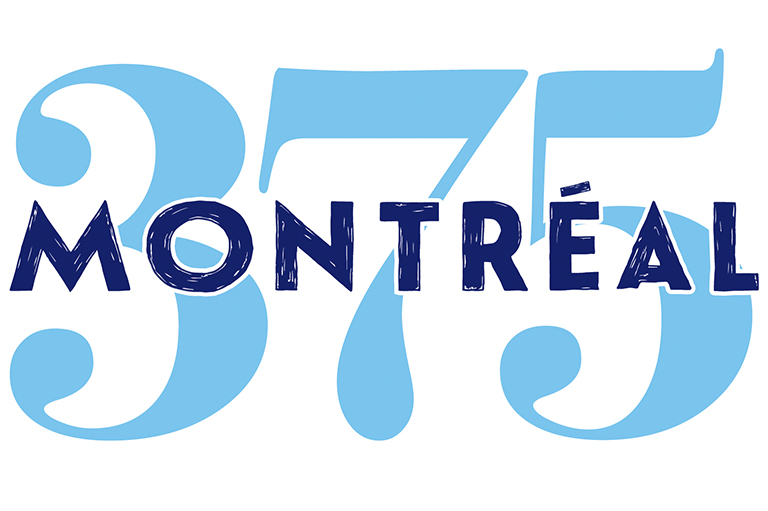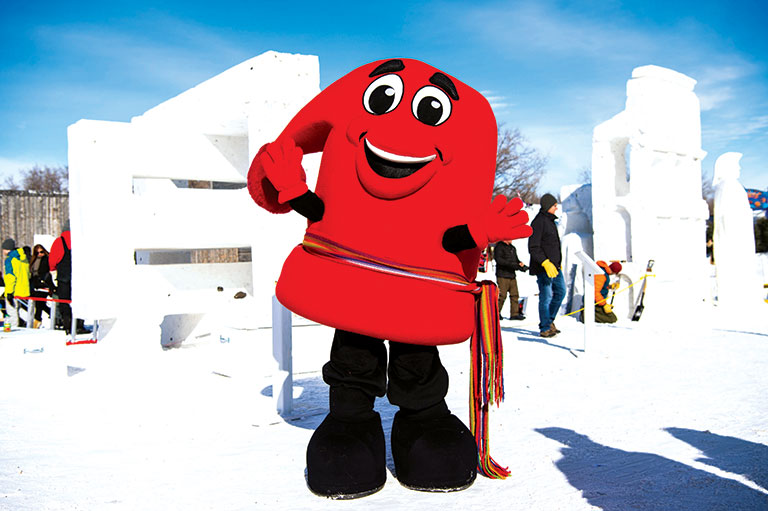"YES" Button

During the first Quebec referendum, organized in 1980 by the Parti Québécois (PQ) government of René Lévesque, separatists wore these buttons urging people to vote “Yes” to independence. The referendum took place at the culmination of the rapid social changes of the 1960s and 1970s: the Quiet Revolution, renewed recognition of Quebec within the Canadian federation, and global movements of independence and decolonization.
In 1967, Lévesque founded the Mouvement Souveraineté-Association — the forerunner of the PQ — to advocate for Quebec’s independence. His movement called for the province to become a sovereign state with full control over its legislation, taxation, and external relations, while maintaining an economic union with Canada and continuing to use Canadian currency. After winning the provincial election in 1976, the PQ promised to hold a referendum on the question.
But the independence movement faced forceful opposition from the federal government of Pierre Elliott Trudeau. Quebec society was then divided into two opposing camps — sovereignists for “Yes” and federalists for “No” — each subjected to an intense propaganda campaign involving media appearances, articles in the press, dinner-talks, symposiums, rallies, posters, and buttons. However, the “Yes” camp was divided over certain ideological questions — such as whether to retain association with Canada or to separate completely — and strategic tactics — such as the timing of the referendum and the wording of the question. In addition, the sovereignists’ fundraising success remained modest compared to the money available to the federalist camp.
On the evening of May 2, 1980, the “No” side won with 59.56 per cent of the popular vote. In a speech, Lévesque promised his supporters a “next time.” That time came in 1995, but the “No” side squeaked out a win by a very small majority.
With 7 uniquely curated newsletters to choose from, we have something for everyone.
Themes associated with this article
Advertisement




